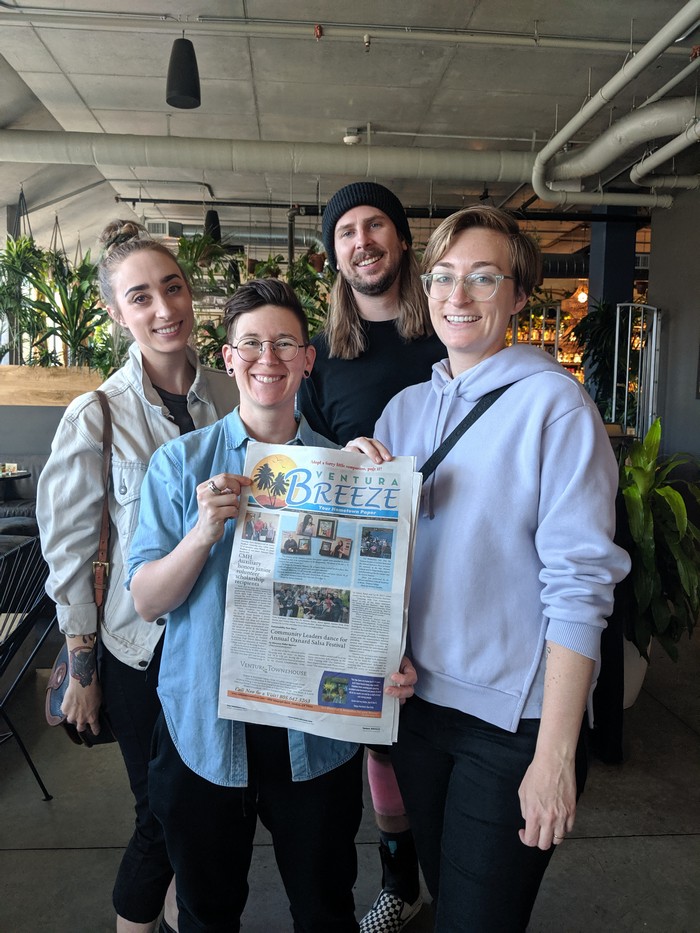 ∙The Ventura County Fair opened today. Some people living in Ventura forget that this is the “Ventura County’ Fair and how lucky we are that it is held right here in our backyard. So, take advantage of it being local. There is certainly something for everyone at the Fair.
∙The Ventura County Fair opened today. Some people living in Ventura forget that this is the “Ventura County’ Fair and how lucky we are that it is held right here in our backyard. So, take advantage of it being local. There is certainly something for everyone at the Fair.
∙ The Trade Desk, a Ventura-based global company, is returning to where it all started – picking up space again behind City Hall in the incubator area. The Trade Desk has agreed to pay for upgrades to the elevator, lobby, parking lot and other amenities. According to the five-year lease, The Trade Desk will pay $21,394.80 per month for the large vacant spaces.
They need to be commended for staying in Ventura and hiring even more Venturans. They have several other office locations in Ventura also. Because they’ve been so successful, they could have moved their HQ office pretty much wherever they wanted to at this point (closer to a major airports), so it’s great they’ve chosen to stay in Ventura. A very successful local story.
∙Eight teens were hospitalized in Wisconsin last month with seriously damaged lungs., the state Department of Health Services has reported. All eight patients, who live in Milwaukee, Waukesha and Winnebago counties, tested negative for infectious diseases and reported vaping in the weeks and months before their hospital admission.
Regarding vaping, to reduce access and combat marketing that targets youths, the Ventura City Council has directed staff to prepare an ordinance that would ban retailers from selling flavored tobacco products and vape juices.
The Council wants to consider the possibility of banning online sales to Ventura residences, prohibiting new tobacco retail licenses from opening within 1,000 feet of a school and ensuring existing tobacco retail licenses within those zones not be transferable.
Staff will also put together recommendations for establishing an annual retail licensing fee in an amount enough to provide the necessary funding to enforce this new ordinance.
Mayor Matt LaVere and councilmember Cheryl Heitmann introduced the policy consideration. It was approved by the full Council.
As you might know, I am concerned about vaping but never comfortable with local governments banning products that are legal (like marijuana).
∙ According to the National Weather Service, Anchorage, Alaska saw its highest temperature on record recently with residents celebrating July 4 with 90-degree temperatures. Several locations through southern Alaska saw their single hottest day on record. This, of course is not global warming.
∙In a series of leaked diplomatic cables, Britain’s ambassador to the United States described President Trump as “radiating insecurity” and his administration as diplomatically “clumsy and inept,” a withering assessment that threatened to damage bilateral relations at a delicate moment for Britain. I, of course, would never make such a statement.
∙Mad Magazine has stopped publishing new material after 67 years. It will only feature vintage Mad content and only be sold at comic bookstores or mailed to subscribers. Hate to see things that I grew up with go away. Maybe time to get rid of my slide rule and land line.
∙Talking about changing times, Berkeley has now re-named manholes as “maintenance” holes to be gender correct. More than two dozen terms will be changed with gender-neutral words.
Before some of you male readers go bonkers saying how stupid this is, you should think about being called a policewoman or firewoman if that is your job. This is how women feel when being called policemen or firemen.
∙Gannett (publisher of the VC Star) – and many other newspapers – is in talks to combine with Gatehouse Media in a deal that would merge the two largest newspaper firms in the U.S. (by circulation).
If the deal goes through, approximately one in every six newspapers in the U.S. would be owned by a single company. The entire newspaper industry has gone through major consolidation and closings because of the growth of large online companies and the competition for advertising dollars.
So, let’s support the Ventura Breeze, and other city papers throughout the country, so we can keep the local papers alive and well.
∙With the two recent large earthquakes, many folks ran outside presuming that is a safe place to be. Experts have always warned the public against leaving a building and going outdoors during a quake. The safest place to be is to remain inside protected from falling debris, dropping power lines and falling trees.
When inside, quickly find a place where things cannot fall on you. And make sure you don’t have heavy paintings or other items and decorations over your bed.
∙San Francisco has released data that reports that their homeless population has increased about 30% from 2017. This does include homeless people in jails, hospitals in residential treatment facilities who will be homeless once they are released.
When California, and other states, began closing the large mental hospitals and facilities (locally Cal State University in Camarillo) about 50 years ago, the plan was to give local communities funding to provide facilities for this population. When President Kennedy, in 1963 signed the Community Mental Health Act, the idea was to provide neighborhoods with housing and funding to provide care and housing.
People who should be in mental health care and obtaining support are in our jails and our streets because of their mental illnesses.
Ventura and the County have made some strides to solve this problem but there is much, much more to do. The next time you see a mentally ill homeless person you might consider the fact that they have no other place to go. And they are not capable of holding a real job or making correct life decisions.






